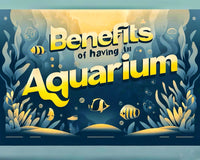Los mejores consejos para montar tu primer acuario
Instalar su primer acuario puede ser una experiencia emocionante y gratificante. Ya sea que esté buscando traer un pedacito del mundo submarino a su hogar por su belleza estética o por la presencia relajante que brinda, tener un plan bien pensado puede hacer que el proceso sea mucho más sencillo. A continuación, le presentamos algunos consejos importantes para guiarlo en la instalación exitosa de su primer acuario.
1. Investigue y planifique con anticipación
Antes de comprar cualquier equipo o pez, tómate el tiempo de investigar a fondo. Conoce los diferentes tipos de acuarios (de agua dulce, salada, salobre), los tipos de peces y plantas que son adecuados para principiantes y el equipo esencial que necesitarás. Planificar con anticipación te permitirá ahorrar tiempo y dinero a largo plazo y te ayudará a garantizar un entorno saludable para tus peces.
2. Elige el tamaño adecuado del acuario
A menudo, se recomienda comenzar con un tanque más grande, por lo general de alrededor de 20 a 30 galones. Los tanques más grandes son más estables y más fáciles de mantener que los más pequeños porque tienen un mayor volumen de agua, lo que diluye los desechos y las toxinas de manera más efectiva.
3. Seleccione la ubicación adecuada
Coloque el acuario en un lugar donde no esté expuesto a la luz solar directa, que puede favorecer el crecimiento excesivo de algas. Asegúrese de que el lugar pueda soportar el peso del acuario lleno (10 libras por galón de agua) y que esté cerca de tomas de corriente, pero lejos de fuentes de calor o aires acondicionados para mantener una temperatura estable.
4. Invierta en equipos de calidad
El equipo esencial para un acuario para principiantes incluye:
- Filtro : Para mantener el agua limpia y clara.
- Calentador : para mantener una temperatura constante adecuada para sus peces.
- Iluminación : para apoyar la salud de las plantas y mejorar la apariencia de su tanque.
- Kits de prueba : para monitorear parámetros del agua como pH, amoníaco, nitrito y niveles de nitrato.
- Grava o Sustrato : Para anclar las plantas y dar un aspecto natural.
5. Haz un ciclo en tu tanque
Es fundamental ciclar el tanque antes de agregar los peces. Este proceso implica el establecimiento de bacterias beneficiosas en el filtro y el sustrato para descomponer toxinas dañinas como el amoníaco y los nitritos en nitratos menos dañinos. Esto puede llevar de 4 a 6 semanas, por lo que la paciencia es clave. Puede ciclar el tanque usando alimento para peces, amoníaco o productos disponibles comercialmente.
6. Elija peces resistentes para empezar
Comience con peces resistentes que puedan tolerar una variedad de condiciones del agua. Las opciones más populares para principiantes incluyen:
- Pez Betta
- Guppies
- Platies
- Tetras neón
- Danios cebra
Investiga la compatibilidad de cada especie para evitar comportamientos agresivos o hacinamiento.
7. Introduzca el pescado gradualmente
Añade unos pocos peces a la vez en lugar de llenar el tanque con todos a la vez. Esto permite que las bacterias beneficiosas se adapten y evita picos repentinos en los niveles de amoníaco. Vigila de cerca a tus peces para detectar cualquier signo de estrés o enfermedad durante este período.
8. El mantenimiento regular es clave
El mantenimiento regular es esencial para un acuario saludable. Esto incluye:
- Cambios de agua semanales : reemplace el 10-20% del agua para eliminar toxinas.
- Limpieza del filtro : Enjuague el medio filtrante con agua del tanque (no con agua del grifo) para preservar las bacterias beneficiosas.
- Prueba de parámetros del agua : asegúrese de que los niveles permanezcan dentro del rango seguro para sus peces.
- Aspiración de grava : elimine los alimentos no consumidos y los residuos del sustrato.
9. Evite la sobrealimentación
La sobrealimentación es un error común entre los principiantes. Los peces solo necesitan una pequeña cantidad de alimento una o dos veces al día. El exceso de alimento puede contaminar el agua y provocar problemas de salud en los peces. Aliméntelos con lo que puedan consumir en 2 o 3 minutos y retire de inmediato cualquier resto de alimento que no hayan consumido.
10. Aprenda de la comunidad
Únase a foros en línea, clubes de acuarios locales o grupos de redes sociales donde pueda compartir experiencias y pedir consejos. Interactuar con la comunidad de acuarios puede brindarle información valiosa y apoyo a medida que avanza en su nuevo pasatiempo.
Conclusión
Instalar su primer acuario es una experiencia llena de aprendizaje y descubrimiento. Si sigue estos consejos y es paciente y atento, podrá crear un entorno acuático próspero que aporte alegría y tranquilidad a su hogar. ¡Feliz crianza de peces!












